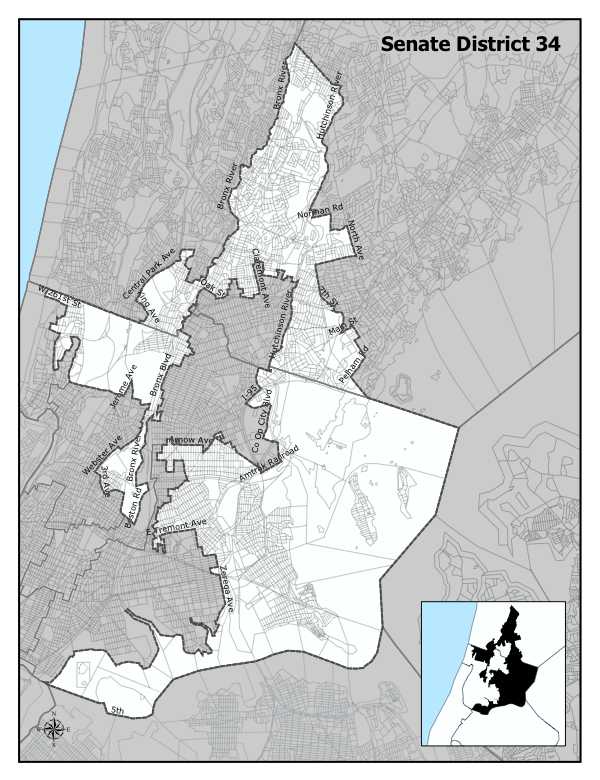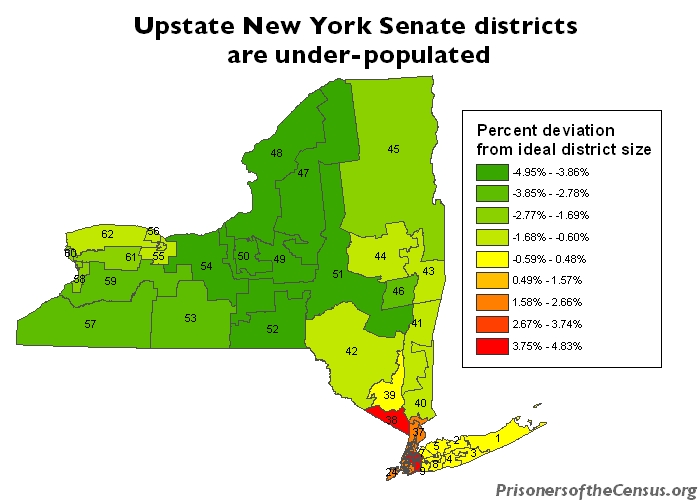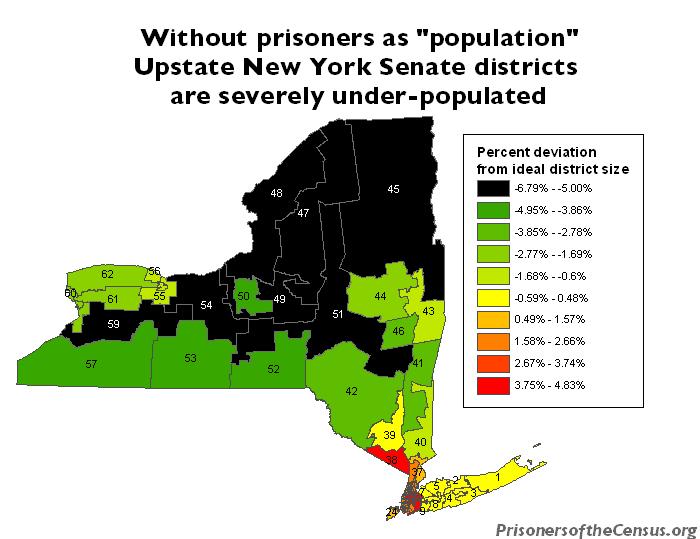Border districts hang in the balance of Census counting decisions
by Peter Wagner, August 2, 2004
Below is a map of New York Senate district 34. The boundary line of this district was the subject of a lawsuit arguing that it was drawn to dilute the voting strength of Blacks and Hispanics.

New York State Senate District 34 is dominated by Westchester county. Bronx residents were included to bring the district population up to the required size.
The Prisoners of the Census project maintains that miscounting urban prisoners as rural residents under-represents urban areas and over-represents rural areas. This causes a domino effect on the location of legislative district boundaries. (See the start of such a domino effect moving southwards from a prison-heavy district in the northeast corner of New York State in this series of maps.)
As explained in Gerrymandering in New York State, New York State Senate districts are under-populated in the upstate region.

Using official population figures, Senate Districts 39 through 62 are under-populated by a combined total 209,861 people. That represents 68.6% of a district, in this case invented out of thin air. This was apparently a ploy to increase the political clout of the upstate region. As of January 2003 these 24 Senate districts were held by 21 Republican and 3 Democratic state senators.)

When state prison populations are discounted, Senate Districts 39 through 62 are short a combined total of 275,268 people, or 89.9% of a district. Almost an entire new district was invented for the region, and fitted among 23 existing districts, making each of these district populations slightly too small.
The New York Senate created a district for Westchester County, and included enough of the Bronx so that the district would have enough population. But the district was designed to be a Westchester district. When this cross-county district was debated at a legislative hearing in March 2002, it should come as no surprise that it was heavily favored by citizens from Westchester and opposed by citizens from the Bronx.
Had the Census not undercounted New York City by 43,740 prisoners, perhaps the Bronx population would have been large enough to not be consumed by this cross-county district. Similarly, had 65,407 prisoners not been counted in upstate prison cells, perhaps the Westchester districts would not have been positioned so that it would spill over into the Bronx.
According to the New York State Constitution, prisoners neither gain nor lose residence while housed in correctional facilities. Since the state legislature relies on Census figures to draw its own district boundary lines, it is imperative that the Census accurately count all New York state residents at their homes-of-record and not at transient locations.



